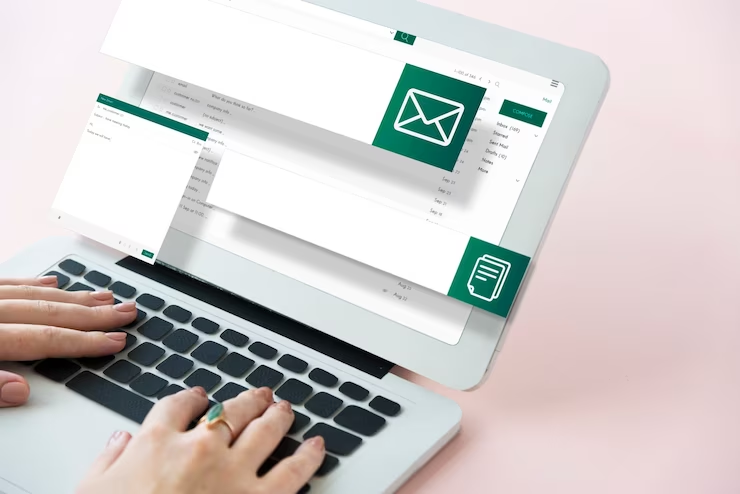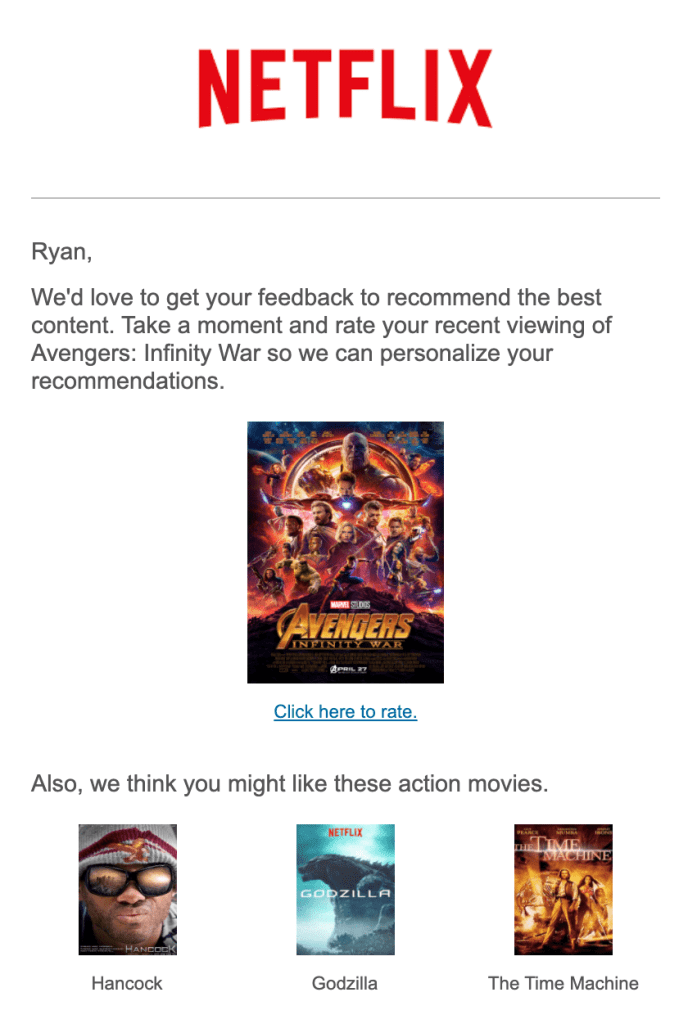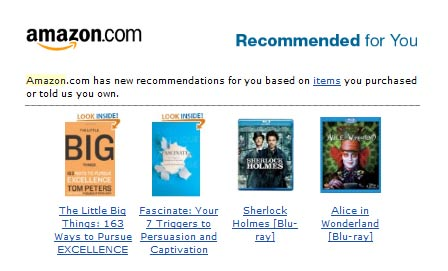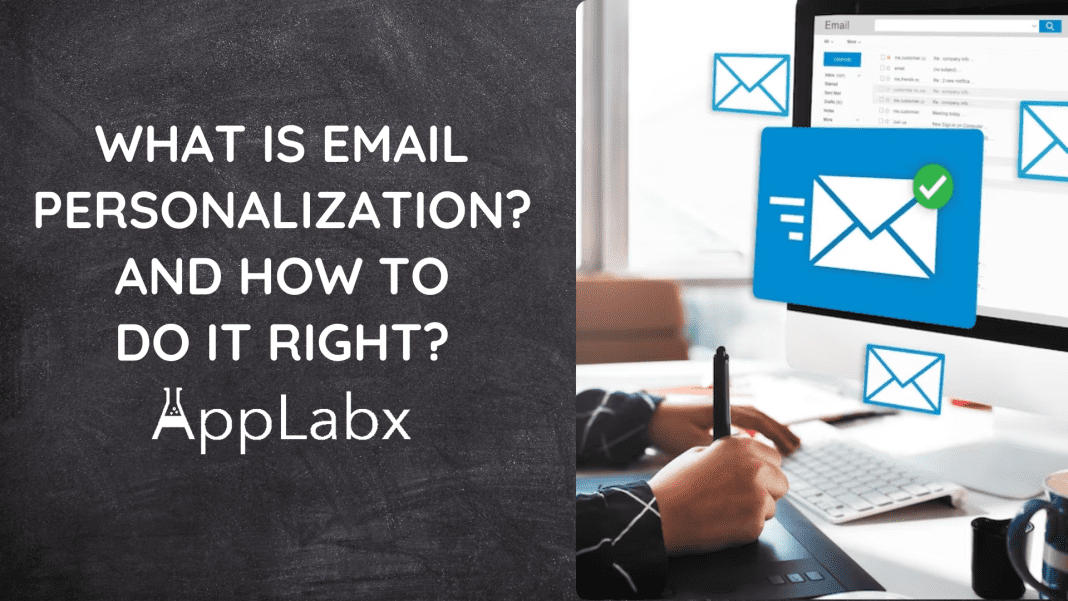Key Takeaways
- Elevate Engagement: Dive into the guide to learn how personalized email campaigns can significantly boost engagement, fostering a deeper connection with your audience.
- Strategic Implementation: Uncover key components and best practices to implement email personalization strategically, ensuring your campaigns resonate effectively with individual recipients.
- Future-Ready Tactics: Stay ahead in digital marketing by exploring emerging trends, from hyper-personalization to integrating advanced technologies, to ensure your email personalization is future-proof and impactful.
In the ever-evolving landscape of digital marketing, where the inbox is inundated with a myriad of messages vying for attention, mastering the art of email personalization has become the linchpin of successful communication strategies.
The age-old mantra “one size fits all” is increasingly obsolete, giving way to a more nuanced and targeted approach that resonates with individual recipients on a personal level.
Enter the realm of email personalization – a dynamic and strategic method that transcends generic mass messaging, ushering in an era of tailored content that speaks directly to the hearts and minds of your audience.

Defining Email Personalization: Unveiling the Power of Personal Connections
At its core, email personalization is not merely a buzzword but a powerful marketing tool that aims to transform the traditional email from a generic missive into a bespoke experience for each recipient.
It’s about understanding that your audience is not a homogenous entity but a diverse tapestry of individuals with unique preferences, behaviors, and needs.
Email personalization, therefore, is the art of crafting and delivering messages that cater specifically to these nuances, creating a more meaningful and impactful engagement.
Why Email Personalization Matters in the Marketing Landscape
As we navigate the digital age, bombarded by a constant influx of information, the importance of standing out in the clutter cannot be overstated.
Email personalization emerges as a beacon in this sea of generic communication, offering a direct channel to connect with your audience in a way that feels personal and relevant.
Beyond the quest for attention, tangible benefits underscore the significance of incorporating personalization into your email marketing arsenal.
In this comprehensive exploration, we will delve into the intricacies of email personalization, unraveling its key components, elucidating best practices, and offering practical insights on how to execute personalized email campaigns with precision.
Whether you are a seasoned marketing professional looking to refine your strategies or a novice eager to harness the potential of email personalization, this guide will equip you with the knowledge and tools needed to navigate this exciting terrain successfully.
Join us on a journey into the heart of email personalization, where creativity meets data-driven precision, and discover how to not only do it but do it right in the realm of digital marketing.
But, before we venture further, we like to share who we are and what we do.
About AppLabx
From developing a solid marketing plan to creating compelling content, optimizing for search engines, leveraging social media, and utilizing paid advertising, AppLabx offers a comprehensive suite of digital marketing services designed to drive growth and profitability for your business.
AppLabx is well known for helping companies and startups use email marketing to drive web traffic to their websites and web apps.
At AppLabx, we understand that no two businesses are alike. That’s why we take a personalized approach to every project, working closely with our clients to understand their unique needs and goals, and developing customized strategies to help them achieve success.
If you need a digital consultation, then send in an inquiry here.
What Is Email Personalization? And How to Do It Right
- Benefits of Email Personalization
- Key Components of Email Personalization
- Best Practices for Email Personalization
- Tools and Technologies for Email Personalization
- Tips for Implementing Email Personalization
- Future Trends in Email Personalization
1. Benefits of Email Personalization
In the ever-evolving landscape of digital marketing, the implementation of email personalization emerges as a game-changer, offering a multitude of benefits that transcend traditional mass email campaigns.
Let’s delve into the tangible advantages that businesses can reap by embracing this dynamic approach.

Improved Customer Engagement
Email personalization serves as a catalyst for enhanced customer engagement, fostering a deeper connection between brands and their audience.
Tailored Content
Example: Consider the impact of addressing recipients by their first name.
According to a study, personalized promotional mailings have 29 per cent higher unique open rates and 41 per cent higher unique click rates than non-personalized mailings.
Behavioral Targeting
Analyzing customer behaviours allows for targeted content delivery.
Increased Open and Click-Through Rates
The effectiveness of email campaigns is significantly heightened when emails are personalized, resulting in higher open and click-through rates.
Personalized Subject Lines
Example: A study found that emails with personalized subject lines are 26% more likely to be opened.
This small tweak can be a powerful driver of engagement.
Dynamic Content
Example: Netflix’s personalized recommendation emails, tailored to users’ viewing history, contribute to their success.

Enhanced Customer Loyalty and Satisfaction
Personalized communication contributes to building strong relationships with customers, fostering loyalty and satisfaction.
Personalized Offers
Example: Amazon’s recommendation emails showcase products based on individual browsing and purchase history.

Birthday and Anniversary Emails
Example: Sending personalized birthday emails, such as those from Starbucks offering a free drink, not only celebrates the customer but also strengthens the bond. Birthday emails can lift conversion rates by 60% over non-birthday email campaigns.
2. Key Components of Email Personalization
As we unravel the intricacies of email personalization, it becomes imperative to understand the key components that collectively contribute to its success.
From dynamic content to precise segmentation, each element plays a crucial role in crafting a tailored and impactful email campaign.

Dynamic Content
Dynamic content is the linchpin of email personalization, allowing marketers to create bespoke messages that resonate with individual recipients.
Customized Salutations
Personalized Product Recommendations
Example: E-commerce giant, Amazon, has mastered the art of personalized recommendations. Up to 35% of Amazon’s sales are generated thanks to the proprietary product recommendation algorithm, showcasing the potency of suggesting products based on individual preferences.
Segmentation and Targeting
Effective segmentation and targeting involve categorizing your audience based on various criteria to deliver content that meets their needs and preferences.
Demographic Segmentation
Example: Segmented campaigns had a 14.31% higher open rate and a 100.95% higher click rate than non-segmented campaigns. A company like Spotify utilizes demographic data to curate personalized playlists resonating with users’ music preferences.

Behavioral Segmentation
Example: The success of Netflix’s recommendation engine is rooted in behavioral segmentation. By analyzing users’ viewing habits, Netflix tailors content recommendations, contributing to increased engagement and retention.
Personalized Subject Lines and Preheaders
The first interaction a recipient has with an email is often through the subject line and preheader. Personalizing these elements can significantly impact open rates.
A/B Testing for Optimization
Example: By experimenting with different personalization strategies, marketers can pinpoint the most effective approaches for their audience.
Personalization Tokens
Example: Including the recipient’s name in the subject line or preheader can grab attention. Personalized subject lines can increase open rates by 29.3% on average, compared to non-personalized subject lines.
3. Best Practices for Email Personalization
As businesses navigate the intricate landscape of email marketing, adopting best practices for email personalization becomes paramount.

Data Collection and Analysis
In the era of data-driven marketing, the effective collection and analysis of customer data are pivotal for crafting personalized email experiences.
Importance of Customer Data
Customer data is the bedrock of personalization. 80% of consumers are more likely to do business with a company that offers personalized experiences.
Privacy Considerations
Striking a balance between personalization and privacy is crucial.
Creating Buyer Personas
Understanding your audience at a granular level is essential for crafting personalized content that resonates with their preferences and needs.
Tailoring Content to Personas
Crafting content based on buyer personas yields results. Companies that exceed lead and revenue goals are 4 times more likely to use personas for demand generation than organizations that miss lead and revenue goals.
Understanding Your Audience
Netflix’s success is rooted in its deep understanding of user preferences.
By analyzing viewing habits and user data, Netflix tailors content recommendations, contributing to increased engagement and retention.
4. Tools and Technologies for Email Personalization
In the fast-paced world of digital marketing, leveraging cutting-edge tools and technologies is instrumental in executing effective email personalization strategies.
From robust email marketing platforms to the integration of artificial intelligence (AI), a plethora of resources is available to enhance personalization efforts and drive engagement.

Email Marketing Platforms
Email marketing platforms serve as the foundational infrastructure for executing personalized campaigns, offering features designed to streamline and optimize the personalization process.
Features for Personalization
Leading platforms such as Mailchimp, Constant Contact, and HubSpot provide intuitive features for personalization, allowing marketers to easily customize content, subject lines, and even delivery times based on recipient behaviours and preferences.

Popular Platforms in 2023
As of 2023, platforms like Klaviyo and ActiveCampaign are gaining prominence for their advanced personalization capabilities.

Artificial Intelligence in Email Personalization
The integration of artificial intelligence (AI) brings a new dimension to email personalization, enabling real-time analysis and adaptive content delivery.
Machine Learning Algorithms
AI-driven platforms leverage machine learning algorithms to analyze vast datasets and predict individual user preferences. 51 per cent of companies are already using AI.
Real-time Personalization
Platforms like Persado use AI to dynamically generate email content based on individual user profiles and behaviours.
Customer Data Platforms (CDPs)
Customer Data Platforms play a pivotal role in consolidating and organizing customer data from various touchpoints, facilitating more accurate and comprehensive personalization efforts.
Unified Customer Profiles
CDPs, like Segment and Tealium, create unified customer profiles by aggregating data from multiple sources. This allows marketers to create a holistic view of each customer, enhancing the precision of personalized campaigns.

Improved Segmentation
By utilizing CDPs, marketers can achieve more refined segmentation based on a comprehensive understanding of customer behaviors.
5. Tips for Implementing Email Personalization
As businesses strive to harness the potential of email personalization, the implementation process requires careful consideration and strategic planning.
Here, we explore key tips to guide marketers in effectively incorporating personalization into their email campaigns for maximum impact.

Start Small and Scale
Embarking on the journey of email personalization can be overwhelming, but starting with incremental steps can pave the way for successful implementation.
Gradual Personalization Rollouts
Initiate personalization efforts by gradually incorporating elements such as personalized subject lines or tailored content.
This approach minimizes the risk of overwhelming both the marketing team and recipients.
Monitor and Adjust
As personalization elements are introduced, closely monitor metrics and adjust strategies based on performance.
This iterative process allows for continuous improvement without risking the integrity of the entire campaign.
Continuously Monitor and Adjust
Successful email personalization is an ongoing process that demands constant vigilance and adaptation to evolving consumer behaviors.
Real-time Analytics
Utilize real-time analytics to track the performance of personalized campaigns.
Behavioral Insights
Leverage behavioral insights to refine personalization strategies. For instance, analyzing click patterns and browsing history can provide valuable data for tailoring content to individual preferences, contributing to improved engagement.
Seek Customer Feedback
Customer feedback serves as a valuable compass in the personalization journey, providing insights into the effectiveness and relevance of personalized content.
Post-Interaction Surveys
Implement post-interaction surveys to gather direct feedback on personalized experiences. Customer opinions can reveal areas for improvement and highlight aspects of personalization that resonate positively.
Social Media Listening
Monitor social media channels for unsolicited feedback on email campaigns. Social listening tools can help identify sentiments regarding personalization efforts and uncover potential areas for enhancement.
Personalization Based on Purchase History
Tailoring email content based on a customer’s purchase history enhances the relevance of communication, fostering a stronger connection.
Product Recommendations
Leverage data on past purchases to recommend related or complementary products. Personalized Product recommendations increase e-commerce conversion rates by 915%.
Exclusive Offers
Send exclusive offers or discounts on products previously purchased.
This approach not only demonstrates appreciation for customer loyalty but also incentivizes repeat purchases.
6. Future Trends in Email Personalization
As technology evolves and consumer expectations continue to shift, the landscape of email personalization is poised for transformative changes.
Exploring the future trends in this realm unveils exciting possibilities that can redefine how brands connect with their audience through email campaigns.

Emerging Technologies in Email Personalization
The integration of cutting-edge technologies is expected to play a pivotal role in shaping the future of email personalization, ushering in a new era of sophisticated and dynamic communication.
Artificial Intelligence (AI) Advancements:
AI is anticipated to become even more integral in email personalization.
The evolution of machine learning algorithms will empower marketers to analyze vast datasets in real-time, predicting user preferences with unprecedented accuracy.
Predictive Analytics
Predictive analytics will gain prominence, enabling brands to anticipate customer behaviours and tailor content proactively.
By leveraging historical data and patterns, marketers can create hyper-personalized experiences that resonate with individual preferences, contributing to increased engagement and conversion rates.
Hyper-Personalization and Individualized Experiences
The future of email personalization is moving towards hyper-personalization, where every element of an email is tailored to the individual recipient’s preferences, behaviours, and context.
Dynamic Content Blocks
Dynamic content blocks within emails will become more sophisticated, allowing for real-time adjustments based on user interactions.
For instance, if a recipient clicks on a specific product category, subsequent content blocks could dynamically update to showcase related products.
Location-Based Personalization
Location-based personalization will become more prevalent, providing users with localized content and offers.
Interactive and Gamified Content
The future of email personalization will see a rise in interactive and gamified content, creating a more engaging and immersive experience for recipients.
Interactive Elements
Embedding interactive elements within emails, such as quizzes, polls, or clickable hotspots, will be a trend.
Interactive content encourages active participation, leading to a deeper level of engagement.
Gamification Strategies
Gamification elements, like reward systems or challenges, will be employed to make email experiences more enjoyable.
By introducing gamified elements, brands can captivate the attention of recipients and build a sense of fun around their content.
Integration with Other Channels
The future of email personalization extends beyond the inbox, with seamless integration with other digital channels for a cohesive and unified customer experience.
Omnichannel Personalization
Brands will increasingly focus on delivering a seamless omnichannel experience, ensuring that personalized messages are consistent across email, social media, and other digital touchpoints.
Personalization Across Social Media
Social media platforms will play a more significant role in email personalization.
Brands will leverage data from social interactions to refine email personalization strategies, creating a unified brand narrative across channels.
Privacy and Ethical Considerations
As personalization becomes more sophisticated, the importance of privacy and ethical considerations will be paramount to maintaining consumer trust.
Transparent Data Usage
Brands will need to be transparent about how customer data is used for personalization.
Clear communication regarding data practices builds trust and aligns with consumer expectations.
Preference-Based Opt-Ins
Opt-in strategies that allow users to define their preferences for personalization will become standard.
Giving consumers control over the level of personalization they receive respects their autonomy and fosters a positive relationship.
Conclusion
In the ever-evolving realm of digital marketing, mastering the art of email personalization has emerged as a cornerstone for cultivating meaningful connections with audiences.
The Power of Personal Connection
At its essence, email personalization transcends the one-size-fits-all approach, recognizing the diverse tapestry of individual preferences, behaviours, and needs that constitute an audience.
It’s a strategic endeavour that seeks to transform generic email communication into a bespoke experience, one that resonates on a personal level with each recipient.
The power of personal connection, as evidenced by numerous studies, lies in its ability to foster engagement, boost open and click-through rates, and ultimately build lasting customer loyalty.
Benefits That Resonate: From Engagement to Loyalty
The benefits of email personalization are both tangible and transformative. By tailoring content, subject lines, and offers to suit individual preferences, brands can elevate customer engagement to new heights.
Beyond immediate engagement, the ripple effect extends to customer loyalty, where personalized experiences become a catalyst for sustained brand advocacy and repeated conversions.
Navigating the Key Components: From Dynamic Content to Segmentation
Understanding the key components of email personalization is akin to unlocking the toolkit for creating impactful campaigns.
Dynamic content, as exemplified by personalized salutations and product recommendations, injects life into emails, capturing attention and inspiring action.
Segmentation, be it demographic or behavioral, serves as the compass, guiding marketers toward precise targeting that resonates with specific audience segments.
By delving into the subtleties of personalization elements, brands can craft messages that not only capture attention but also speak directly to the individual needs and desires of their recipients.
Best Practices as the North Star: Data, A/B Testing, and Continuous Refinement
The implementation of best practices is akin to the North Star guiding marketers through the dynamic landscape of email personalization.
The tips for implementation, from starting small and scaling to seeking customer feedback, provide a roadmap for marketers to navigate the intricacies of personalized campaigns successfully.
Tools and Technologies: A Symphony of Innovation
In the toolkit of email personalization, tools, and technologies play a symphonic role in orchestrating seamless and sophisticated campaigns.
The integration of artificial intelligence, with its predictive analytics and real-time personalization capabilities, heralds a new era of dynamic and adaptive communication.
Tips for the Future: Beyond Personalization into Hyper-Personalization
As we peer into the future, the trajectory of email personalization extends beyond its current bounds.
Emerging technologies, including advanced AI and predictive analytics, promise a future where personalization is not just personalized but hyper-personalized.
Dynamic content blocks, location-based personalization, and interactive, gamified content are poised to redefine the landscape, creating an immersive and enjoyable experience for recipients.
The seamless integration of email personalization with other channels and a heightened focus on privacy and ethical considerations underscore the evolving nature of this marketing paradigm.
A Call to Navigate the Personalization Frontier
In conclusion, mastering email personalization is not just a skill; it’s an ongoing journey into the heart of customer-centric marketing.
It requires a delicate balance of data-driven precision, creativity, and a commitment to understanding and respecting the individuality of each recipient.
As businesses navigate the personalization frontier, armed with the insights and strategies outlined in this comprehensive guide, they are poised to not only do email personalization but do it right.
The future of digital communication is personalized, adaptive, and transformative, and those who embrace this evolution are set to thrive in the dynamic landscape of modern marketing.
If you are looking for a top-class digital marketer, then book a free consultation slot here.
If you find this article useful, why not share it with your friends and business partners, and also leave a nice comment below?
We, at the AppLabx Research Team, strive to bring the latest and most meaningful data, guides, and statistics to your doorstep.
To get access to top-quality guides, click over to the AppLabx Blog.
People also ask
What is email personalization?
Email personalization is the practice of tailoring email content to individual recipients based on their preferences, behaviours, and demographic data. It goes beyond generic messaging, creating bespoke communication that resonates with each recipient, leading to higher engagement, increased brand loyalty, and improved overall marketing effectiveness.
How do I personalize my email address?
You can’t personalize the email address itself, but you can personalize the content within emails. Use recipients’ names, tailor messages based on preferences, and leverage segmentation for targeted content. Personalized emails enhance engagement and build stronger connections with your audience.
What is email customization?
Email customization involves tailoring email content to individual recipients, considering their preferences, behaviors, and demographics. It enhances engagement by delivering personalized experiences, such as using recipients’ names, segmenting content, and adapting messaging to create more meaningful connections.




































